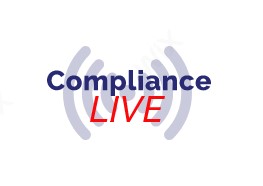What is the value of having a Code of Conduct? In its early days, a Code of Conduct tended to be lawyer-written and lawyer-driven to wave in regulator’s face during an enforcement action as proof of ethical overall behavior. Is such a legalistic code effective? Is a Code of Conduct more than simply your company’s internal law? What should be the goal in the creation of your company’s Code of Conduct?
How important is the Code of Conduct? Consider the 2016 SEC enforcement action involving United Airlines, Inc., which turned on violation of the company’s Code of Conduct. The breach of the Code of Conduct was determined to be a FCPA internal controls violation. It involved a clear quid pro quo benefit paid out by United to David Samson, the former Chairman of the Board of Directors of the Port Authority of New York and New Jersey, the public government entity which has authority over, among other things, United’s operations at the company’s huge east coast hub at Newark, NJ.
The actions of United’s former CEO, Jeff Smisek, in personally approving the benefit granted to favor Samson violated the company’s internal controls around gifts to government officials by failing to not only follow the United Code of Conduct but also violating it. The $2.4 million civil penalty levied on United was in addition to its 2016 Non-Prosecution Agreement (NPA) settlement with the DOJ, which resulted in a penalty of $2.25 million. The scandal also cost the resignation of Smisek and two high-level executives from United.
In the 2012 FCPA Guidance, the DOJ and SEC states:
A company’s Code of Conduct is often the foundation upon which an effective compliance program is built. As DOJ has repeatedly noted the most effective codes are clear, concise, and accessible to all employees and to those conducting business on the company’s behalf.
The Evaluation of Corporate Compliance Programs – Guidance Document (2019 Guidance) further specified “As a threshold matter, prosecutors should examine whether the company has a code of conduct that sets forth, among other things, the company’s commitment to full compliance with relevant Federal laws that is accessible and applicable to all company employees.” The Department of Justice (DOJ) Antitrust Division, Evaluation of Corporate Compliance Programs in Criminal Antitrust Investigations (Antitrust Guidance) also specified “If the company has a Code of Conduct, are antitrust policies and principles included in the document?”
Three key takeaways:
- Every formulation of a best practices compliance program starts with a written Code of Conduct.
- The substance of your Code of Conduct should be tailored to the company’s culture, and to its industry and corporate identity.
- “Document, Document, and Document” your training and communication efforts.







